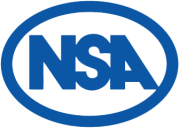Get it right in 2016 – a reminder of sheep identification and movement rules
1st January 2016
It seems to have become the norm that every New Year is welcomed in with changes to sheep identification rules. This year it’s the turn of Wales, which is the fourth and final UK nation to start implementing an electronic movements database – and that means doing away with the plastic (non-EID) slaughter tag that Welsh farmers have previously been able to use in lambs under 12 months of age.
The plastic slaughter tag was originally permissible in England and Wales under an EU derogation, but was phased out in England in 2015 and is no longer an option for Welsh farmers tagging lambs from 1st January 2016. Any lambs born in Wales and tagged before this date can continue to carry the old form of identification; they do not need to be retagged.
From 1st January, Wales falls in step with England and Scotland in that a single EID slaughter tag can be used to identify lambs destined for slaughter before 12 months of age. Full EID (one EID tag and one plastic tag) should be used otherwise, as well as for lambs entering the food chain after 12 months of age and for breeding animals. Full EID is used for all sheep in Northern Ireland.
Recording requirements
Lambs tagged with a single EID slaughter tag can be moved as a batch (as lambs tagged with a non-EID slaughter tag could be before). There is an individual identification number on the chip inside the EID slaughter tag, which can be read with the right equipment, but the legal minimum is to record the number of lambs moving, the holding numbers they are moving between and the date. Animals with full EID must be recorded individually on the movement licence.
In Wales, the creation of the new EID Cymru electronic movements database will only affect auction marts, abattoirs and collection centres in the first instance, as they will have to report all moves online from January onwards. Farmers will continue to paper report, with the option to switch to reporting electronically at a later date if they wish.
Historic flock
The EU derogation on animals that were identified pre-2010 expired on 31st December 2014 – but NSA is still being contacted by members unsure of the rules. These older animals must now be recorded individually on the movement licence, unless moving directly to an abattoir or to an abattoir directly from an auction market when a batch movement will suffice.
There is no legal obligation to retag sheep from the historic flock in England and Wales, but you have the option to do this if it is easier than manually listing individual IDs on the paperwork and if you think it will provide more selling options. Many auction marts in England and Wales will only take these older animals if they have been retagged with full EID. In Scotland, the industry has a working agreement that all historic animals be retagged with full EID when leaving the holding, and full EID is compulsory in Northern Ireland.
EID readers
Nothing has changed when it comes to owning an EID reader, as this is still not a legal requirement. There are many benefits from using electronic identification, readers and recording systems for management purposes, and NSA has many members driving efficiencies in their flocks by doing this, but it is not compulsory to buy reading equipment.
An update on cross compliance inspections in England
The advent of the new animal reporting and movement service (ARAMS) in England appears to have led to a high failure rate at RPA cross-compliance inspections on sheep farms. NSA has been in touch with many members who have fallen foul of the system due to discrepancies between farm records and the database, despite the movement documents and holding register being correct.
NSA and other stakeholder groups have spent a great deal of time seeking clarity on the situation as it stands and urging improvements for the future:-
- If you use the central point recording centre (CPRC) services provided by an auction mart or abattoir it is still your responsibility to check the returns posted are accurate. For example, if the mart records 48 lambs out of a batch of 50, you must ensure the information reported to ARMS is corrected. You can ask the CPRC to make this correction or, if you are in doubt, contact ARAMS directly. The priority is ensuring the number of sheep moved is correct, as well as the date and holding numbers.
- If you are not prepared to accept the risk of a CPRC recording this information on your behalf, you can read identification information yourself – this is not a legal requirement to purchase a reader but a commercial decision based on the risks and benefits to your businesses.
- It is not a legal obligation, but you may wish to consider checking records held on ARAMS against your on-farm records. You can do this by e-registering with ARAMS (you do not need to submit movement records online to do this).
- While discrepancies between database records (ARAMS) and your own on-farm record carry a cross-compliance risk if not rectified and then discovered at an inspection, Defra/RPA have confirmed penalties will not follow for errors they can verify are outside the farmer’s control. This does not include information recorded for you by markets acting as CPRCs but does include, for example, duplicate reports submitted by a market in error into ARAMS or incorrect data inputting by ARAMS.
- NSA and other stakeholder groups have requested that RPA reconsiders the negative language used in post-inspection letters sent to farmers that have breaches, and that more information is provided to explain RPA will check for external errors before confirming a penalty.
- NSA continues to push for tolerance levels within the sheep identification regulations. We argue that only 48 out of 50 lambs being read at a CPRC does not pose a disease risk and, as sheep remain in batches, movements can be traced. The EU must be persuaded to acknowledge the practical limitations of the equipment and reconsider the rules. NSA will continue to keep members updated on progress in this area.

